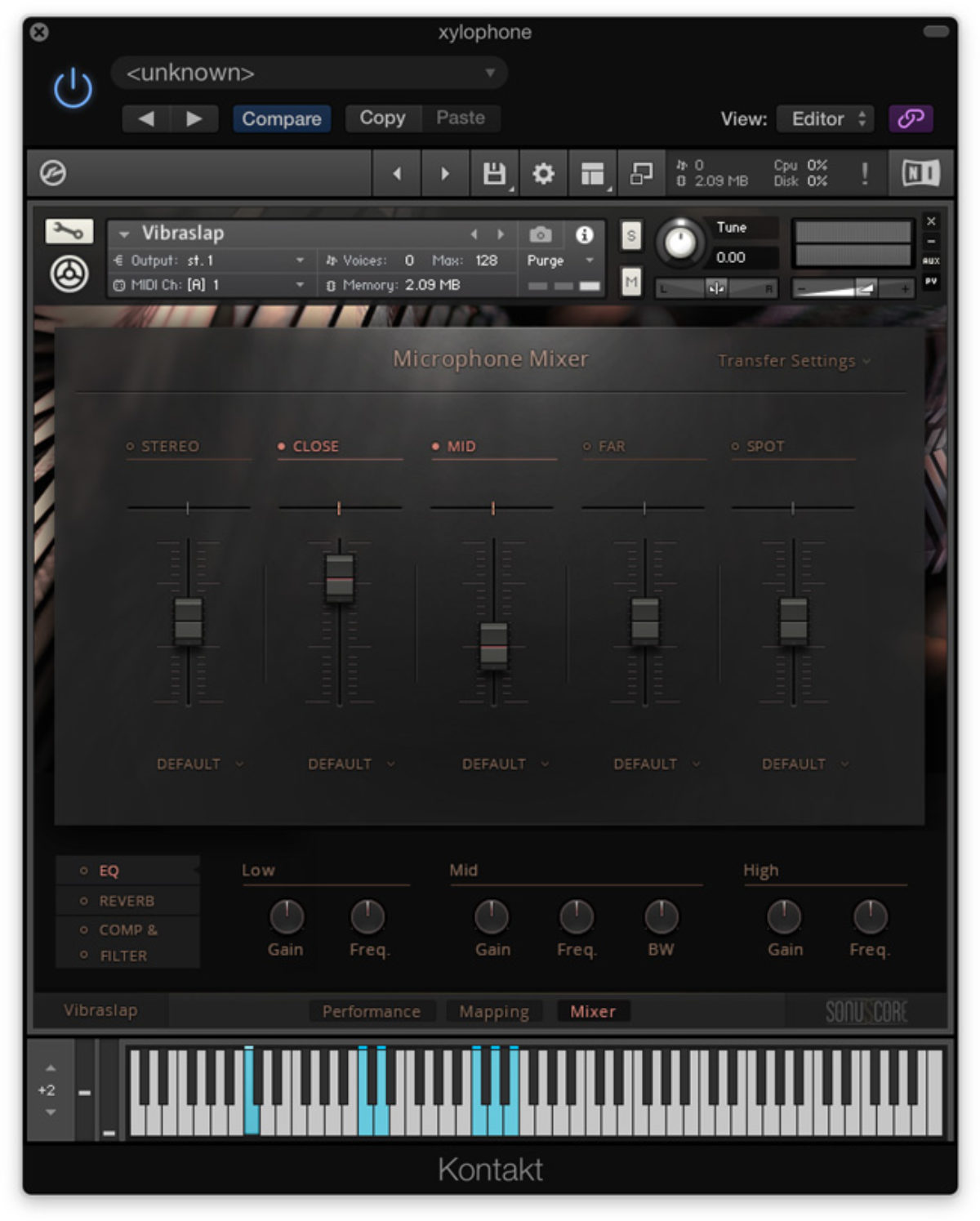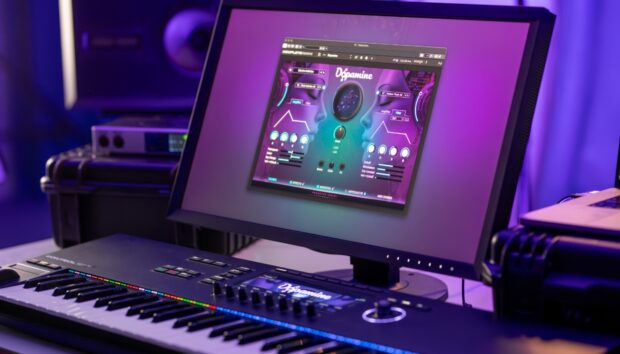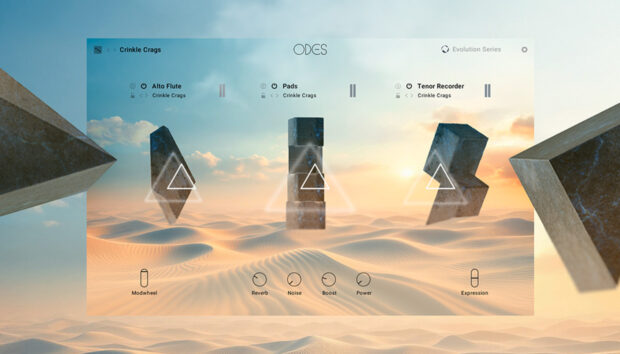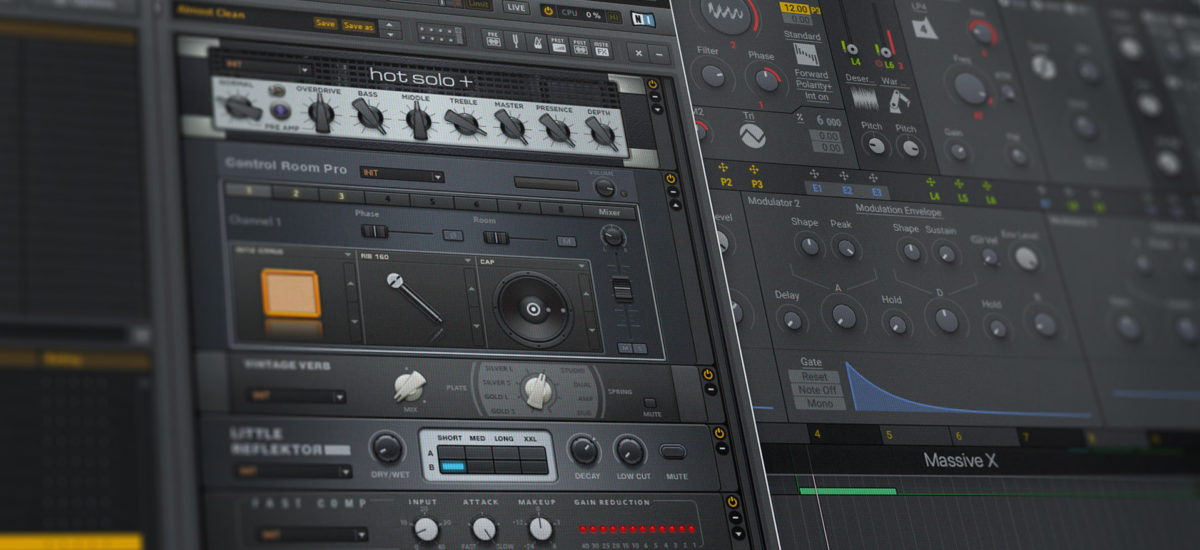
Crash, bang, wallop! There are hundreds of different sound effects sample libraries on the market, covering everything from enormous trailer braaams to transitions and risers. But with everyone having access to the same sounds, how do you make sure that your designed impacts stand out from the crowd? The secret is to take raw samples and synth patches, then use techniques such as layering, blending, deconstruction, and resampling to transform the audio into something completely new. Many Native Instruments products have onboard effects processing to help you make the most of the sounds on offer, or you can render audio into your project and manipulate it with whichever plug-ins you like. Here are five ideas to freshen up your impacts to get them ready for the silver screen.
Layer Cake
One of the fastest ways to create an original impact sound is to use existing samples and carefully layer them up to create a new combination of tones – and this process can be as simple or as complex as you like. Simply playing two or three impact samples together can create an interesting new feel as the frequencies and harmonics interact with one another. Be careful of the timing and phase alignment, ensuring that the transients of the impacts all trigger together and they don’t cancel out one another’s frequencies. Use a mixture of different sound sources to add interest. In this example, I’ve combined a Hit Impact sample from DAMAGE with a couple of MASSIVE X presets; Sub Breeze, which provides the sub bass layer, and Quantum Foam for a glitchy, shimmering top layer.
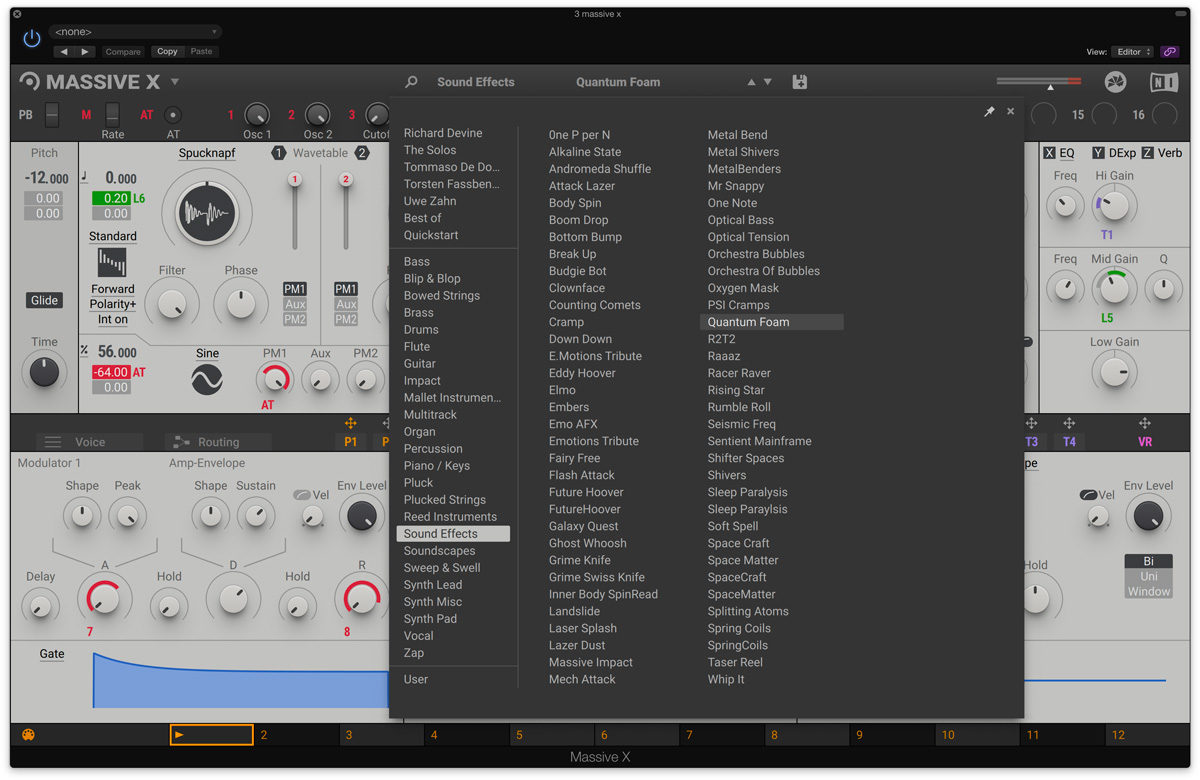
It’s useful to think of impact sounds in three parts, the build-up, hit, and tail. All types of impact sounds will consist of some, if not all of these parts. These individual elements can be pulled apart and remixed to create a unique sound. Think about taking the build-up from one sample, hit from another and then following it with the tail from a third. I like to engineer these impacts manually by choosing some appropriate source sounds, in this case from the Damage Hit Impacts and Disruption Bits Kit within DAMAGE. Then I’ve rendered them to audio and zoomed in closely to the waveforms, stitching them together with quick fades.
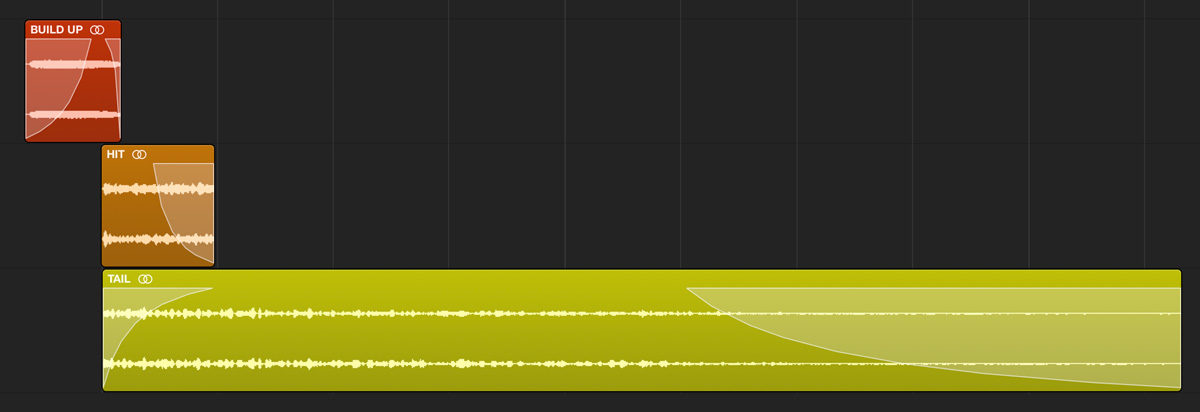
Another way to think of impact sounds is in terms of their frequencies, splitting a sound into its low, mid, and high regions. It’s possible to use EQ processing with band-pass filters to pinpoint exact frequency ranges and then combine elements from multiple samples. For example, use the bass under 200Hz from one impact, the midrange up to 2kHz from another and the top end above 2kHz from a third. Of course, you can tailor the number of layers and frequency splits to your liking, depending on the source material and the effect you need. Here I’ve used the interface low and high pass filters of Damage to isolate the high and mid frequency ranges of two impacts and combined them with MASSIVE X, adjusting the filter to focus on the lowest frequencies.
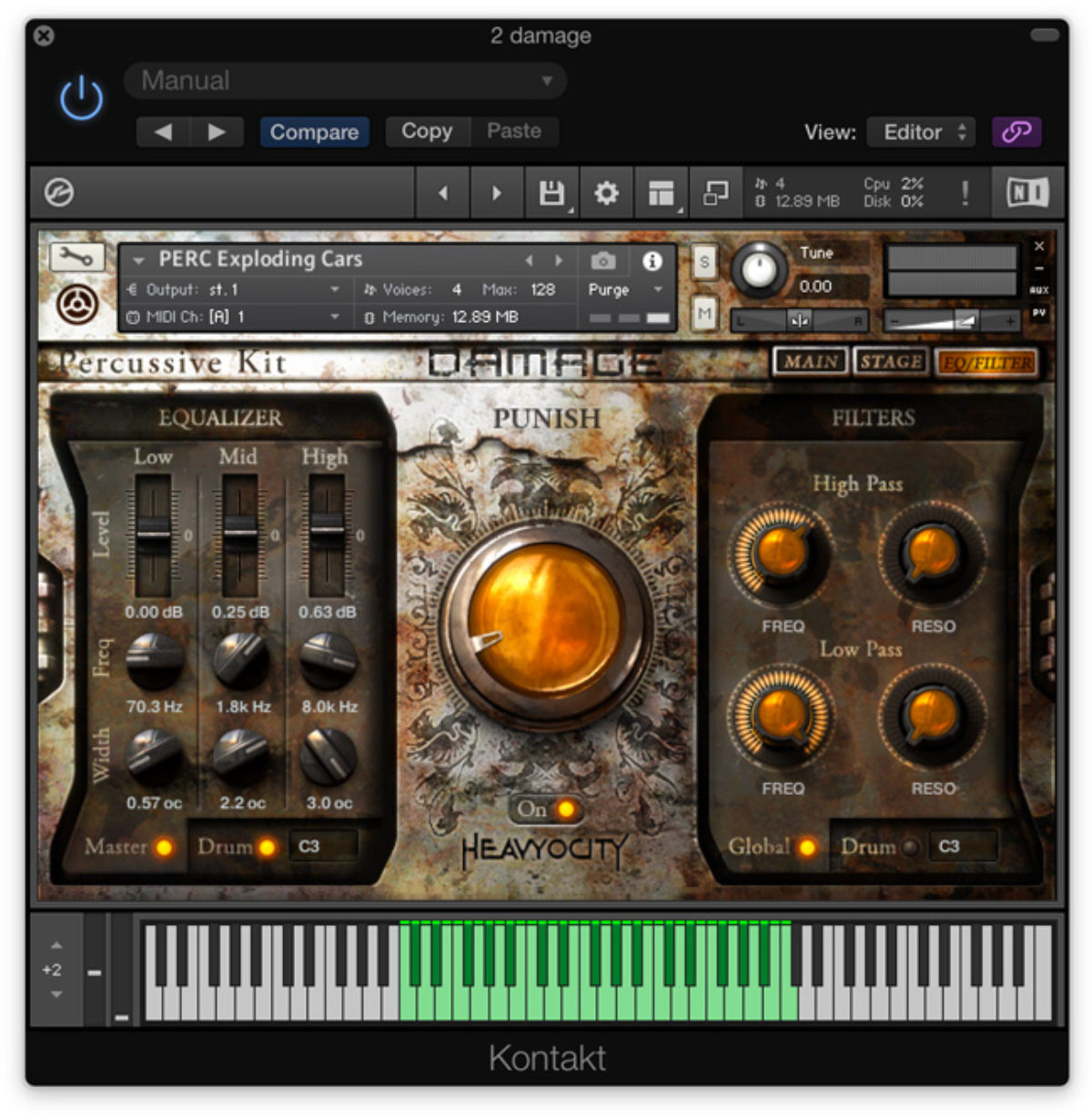
Effects are amongst the most useful tools in a SFX artist’s arsenal, and judicious use of processing plugins can transform a basic hit into a thunderous impact. If you’ve layered samples together then compression, saturation, and reverb will help the sounds gel. However, before you start piling on the plug-ins, think about what it is that you actually want to achieve: If you need more ambience or want to push the sound back into the room, use reverb. Reach for overdrive and distortion if you need your sound to have more bite. For warmth use tube saturation and to break down the sound into something more digital and glitchy employ a bit-crush effect. Native’s GUITAR RIG 5 is a heavyweight effects rack that can be used to process any audio, not just guitar tones. I’ve used the Heavy Compression preset here to glue several impact samples together. Combined with the Skreamer, Reflektor, and Pro-Filter effects, this creates a hollow and oppressive timbre.
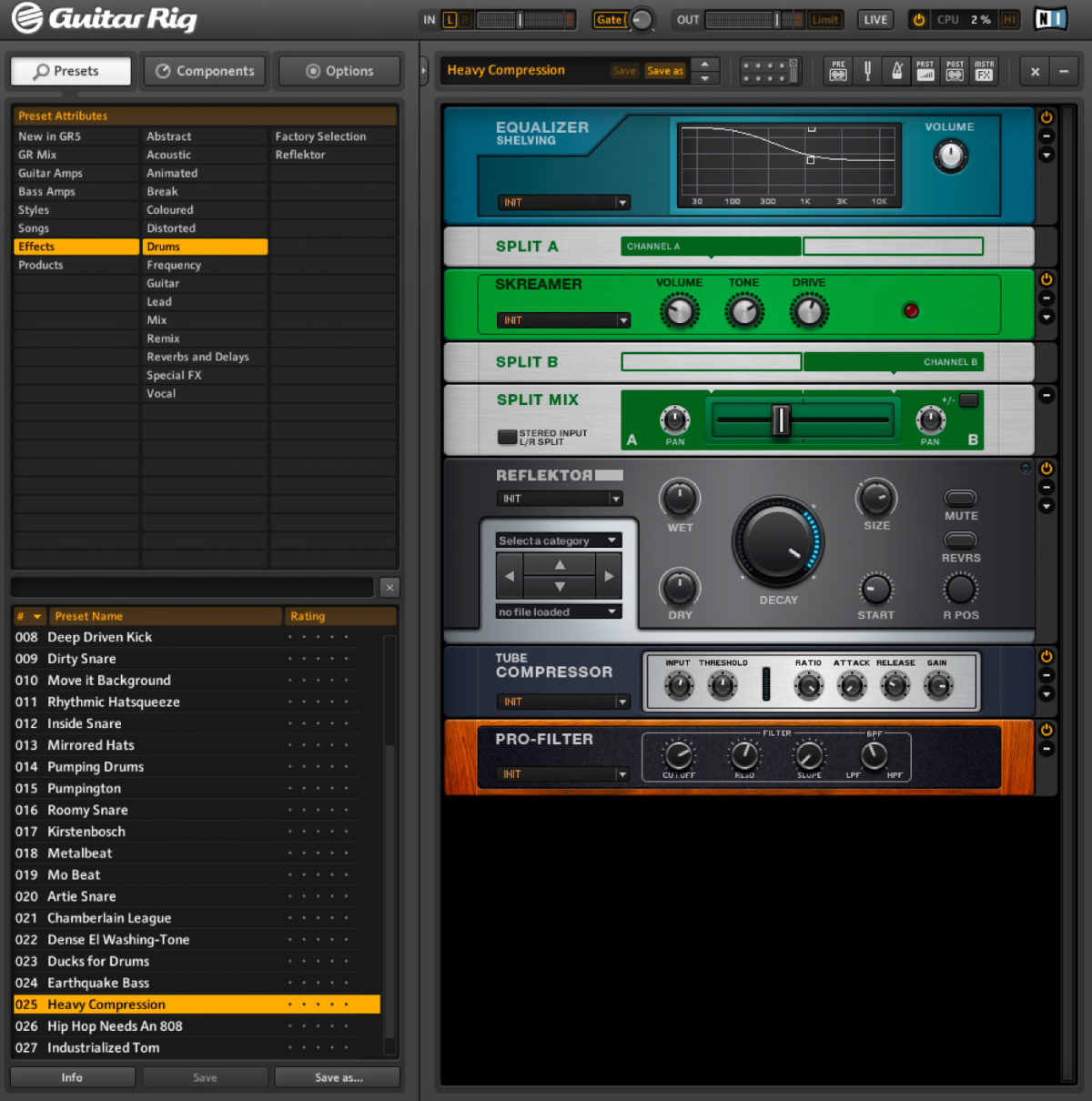
Also think about how your sound works across the stereo field; is it focussed to the centre or designed to boom all around the listener? There are certain stereo processing plugins and phaser/chorus effects that can help with stereo spread, although these tools are rarely as good as designing specific audio for left and right channels whilst building your impact. In this simple example, I’ve taken two similar sounding hits from DAMAGE’s DaMaGeD Piano percussive kit and panned them hard left and right, creating a very wide sound.
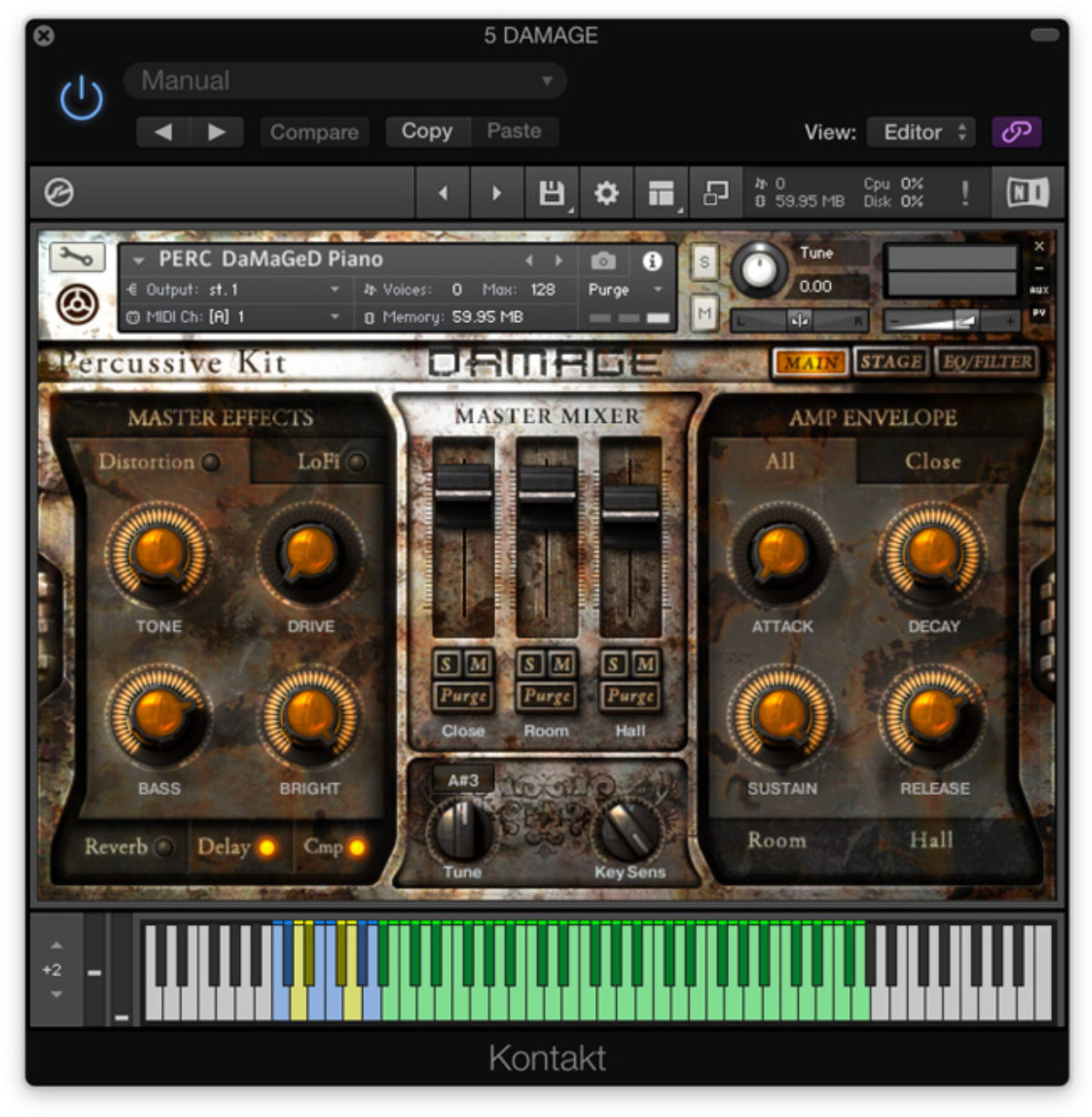
Training Day
So far I’ve mainly looked at how you can manipulate existing audio into new and exciting impact sounds. However, if you really want to come up with something unique, it’s a good idea to create sounds from scratch. Starting from a default synth patch and letting your imagination run wild can produce inspirational sounds, but you need to know how to use the tools at your disposal – this is where factory presets can be really useful as learning resources. For synths, I recommend investigating the presets and pulling them apart to see exactly why they sound the way they do. Then apply this knowledge to your own patches. With sampled instruments, it’s often possible to load up a preset then turn off all of the effects in the GUI until you’re left with the raw sound. Investigating factory sounds in this way will help you learn how the expert designers created those presets, and you’ll discover what works and what doesn’t along the way.
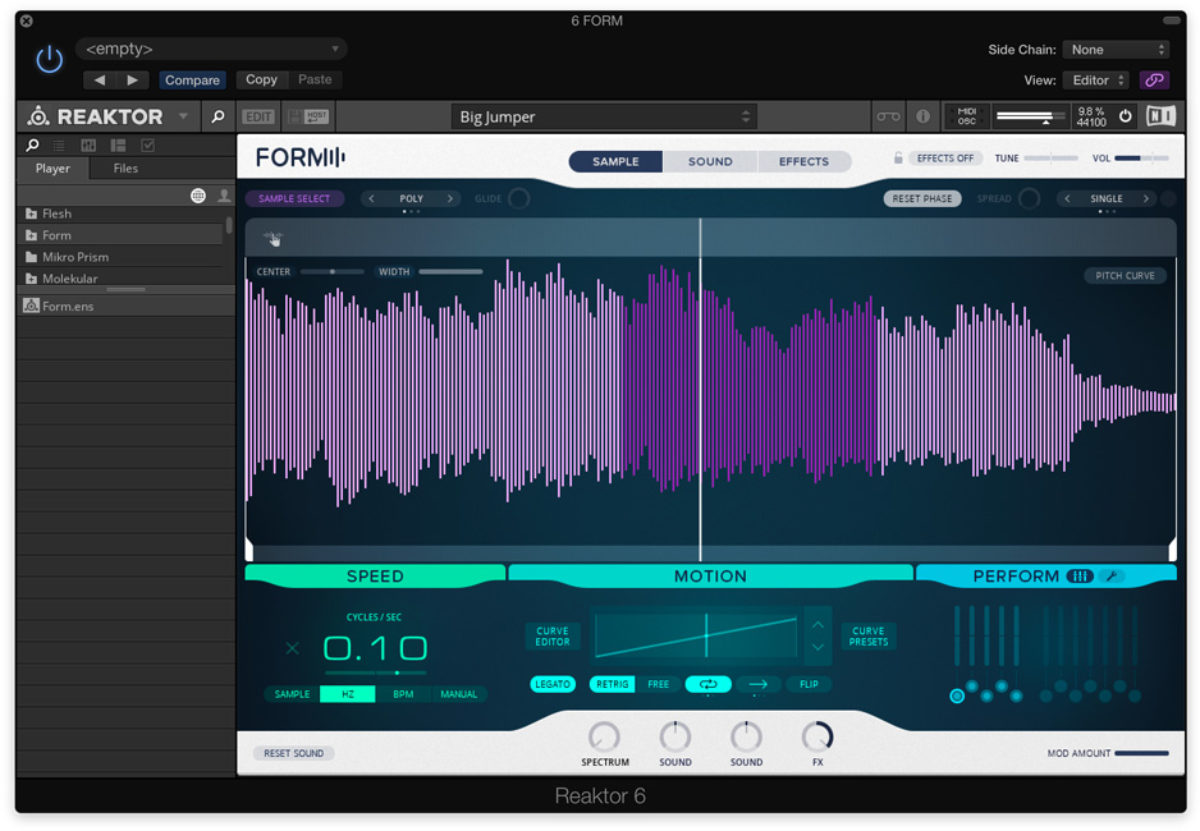
Here’s an example of raw audio before processing and then the preset Big Jumper from FORM where complex modulation and granular synthesis transforms the sound into an intense electronic rising impact.
This piano string scrape from THE GIANT is mutated into a sharp resonant transition with the preset Tunnel Light as convolution and space modules change the tone and ambience of the sound.
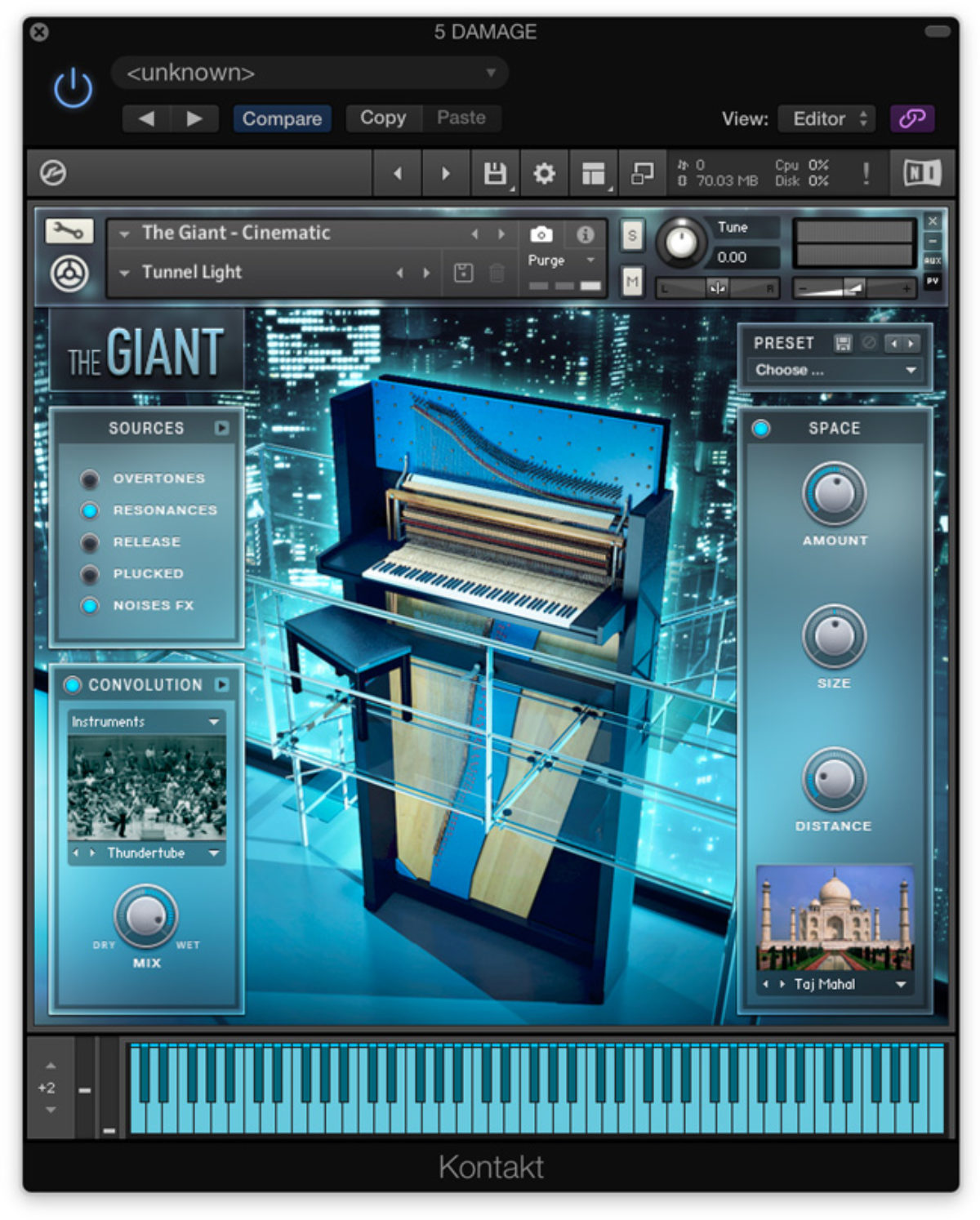
Anything Goes
Although I’ve leaned heavily on the impacts found in action movies, there are many other genres of film that also feature sound effects in their trailers. These range from the delicate orchestral flourishes of comedies, to ancient instrument fanfares for fantasy and the shrieks of horror scores. Be mindful of the tropes of each genre, and create your sound effects accordingly. As an example, think about how cartoons use a wide variety of orchestral instrumentation playing short articulations such as string scoops, overblown winds, and brass rips. Here I’ve used several instruments from the Symphony Series including timpani, xylophone, bassoon and vibraslap alongside some short articulations from Session Strings and Session Horns.
